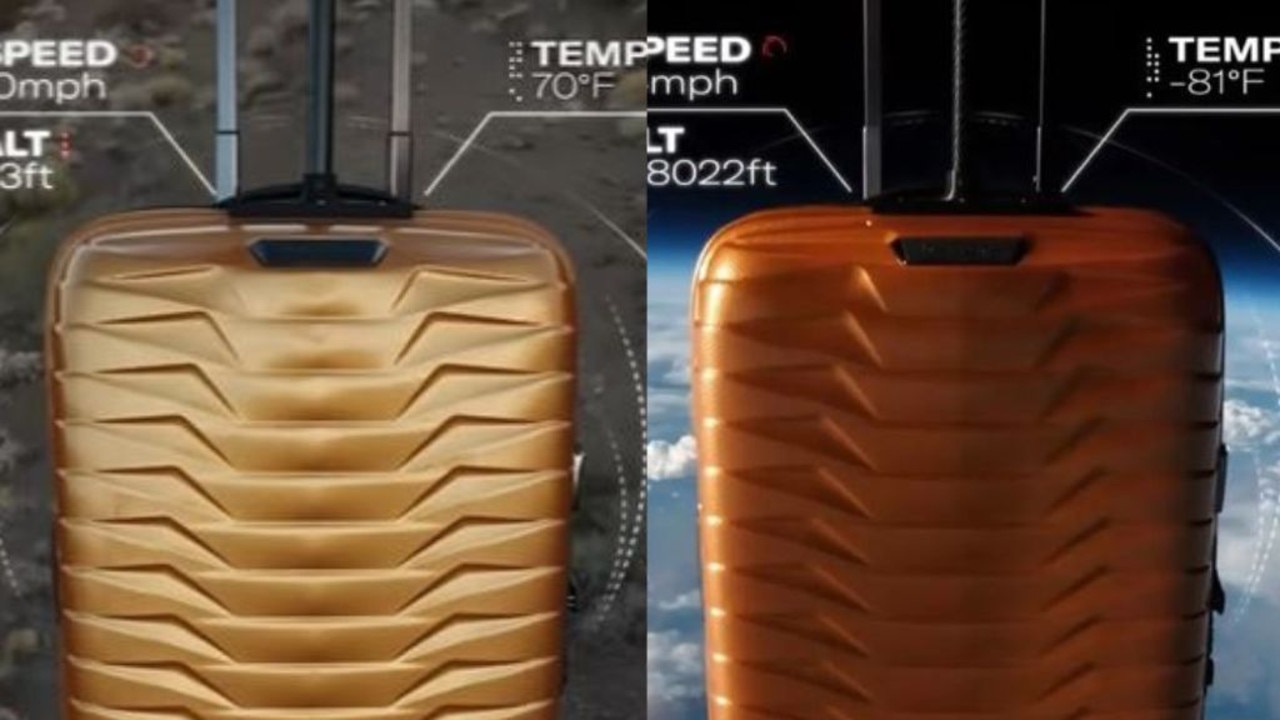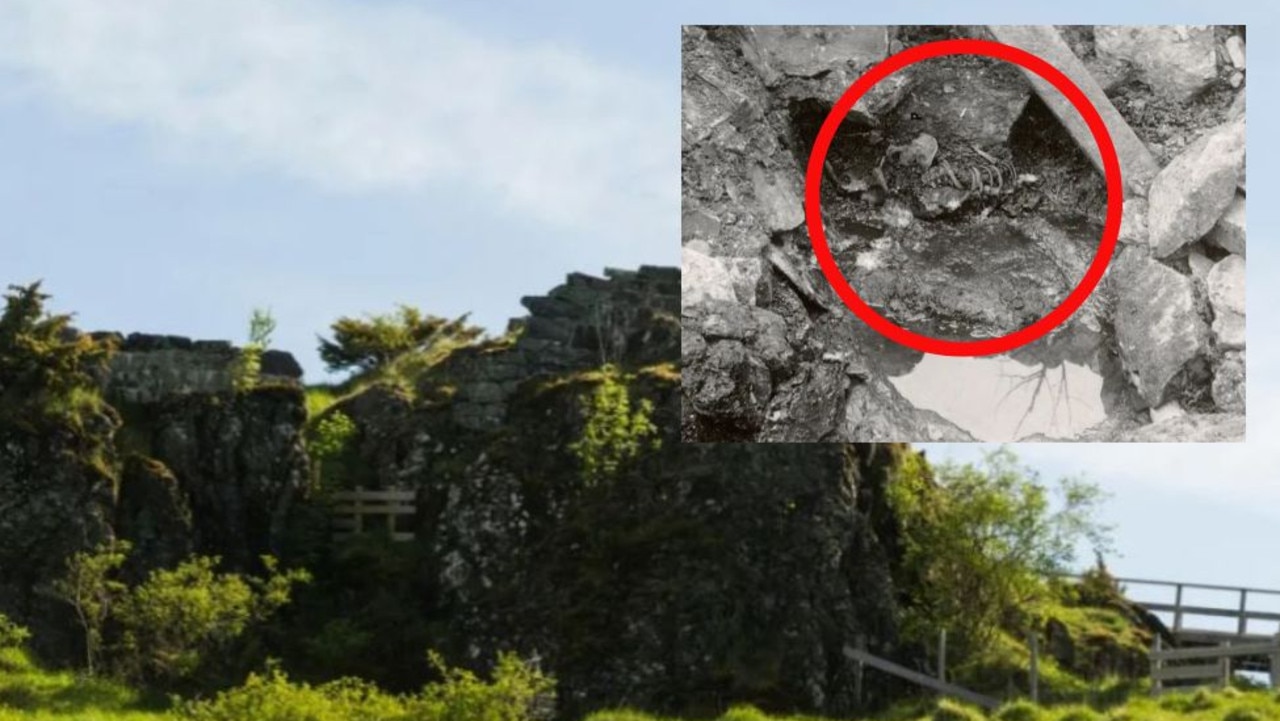Inside the creepy cruise ship boneyard the will house P&O Pacific Explorer
It was once a Queen of the ocean. But now, one of Australia’s most loved cruise ships faces a rather eerie fate.

She was once a Queen of the ocean.
But after the shock announcement that one of the most iconic names in the cruising world – P&O Australia – would be no more from next year, one of the liner’s favourite ships has a grim fate ahead.
While the Pacific Encounter and Pacific Adventure ships, which are currently under the P&O banner, will carry on sailing under the Carnival Cruise name, the Pacific Explorer ship will no longer operate in Australian waters.

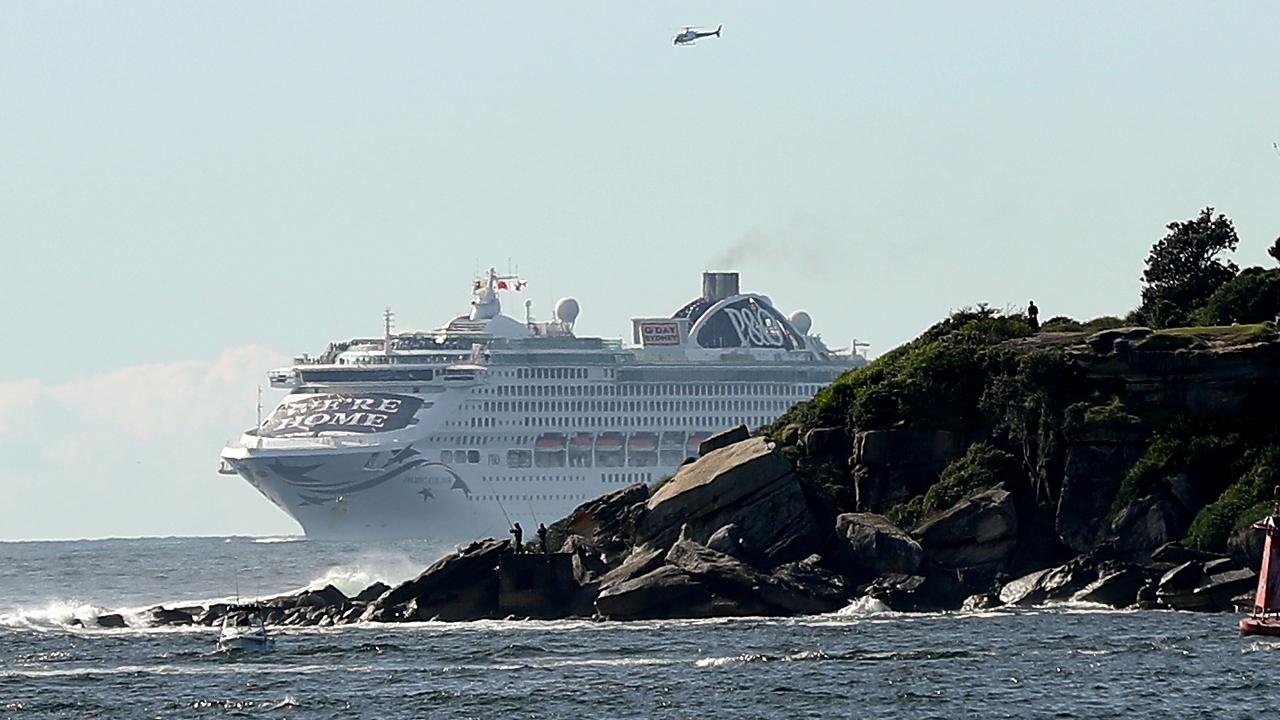
And this means only one thing — the final endeavour for the Explorer will likely end where many multi million-dollar ships before her have gone to die.
Aliaga in Turkey is perhaps one of the most famous cruise ship boneyards in the world, where hundreds of millions of dollars worth of metal and steel are dismantled piece-by-piece.
During Covid, when ships around the world were brought to an abrupt stop while the pandemic plagued the world — incredible pictures from Aliaga showed how retired cruise ships are demolished when they reach the end of their life.
With a ship typically costing more than $300 million to build, some ships within this graveyard linger at almost triple or quadruple that price tag.
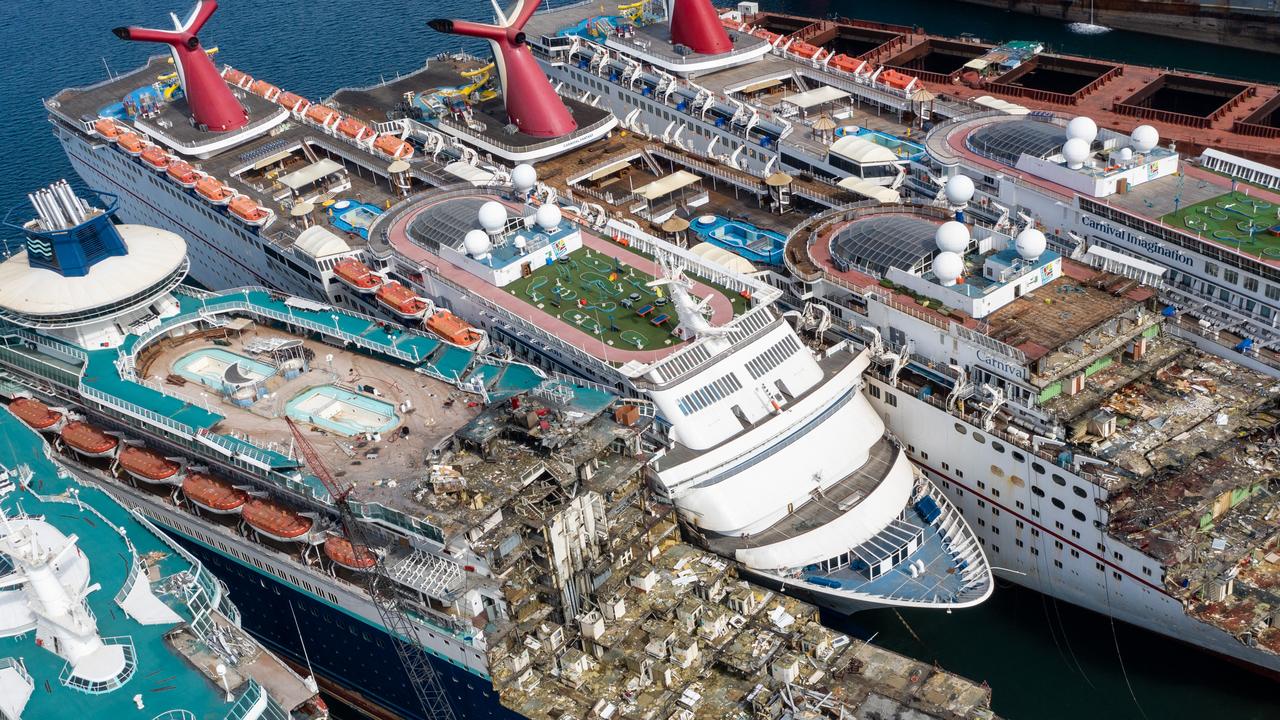
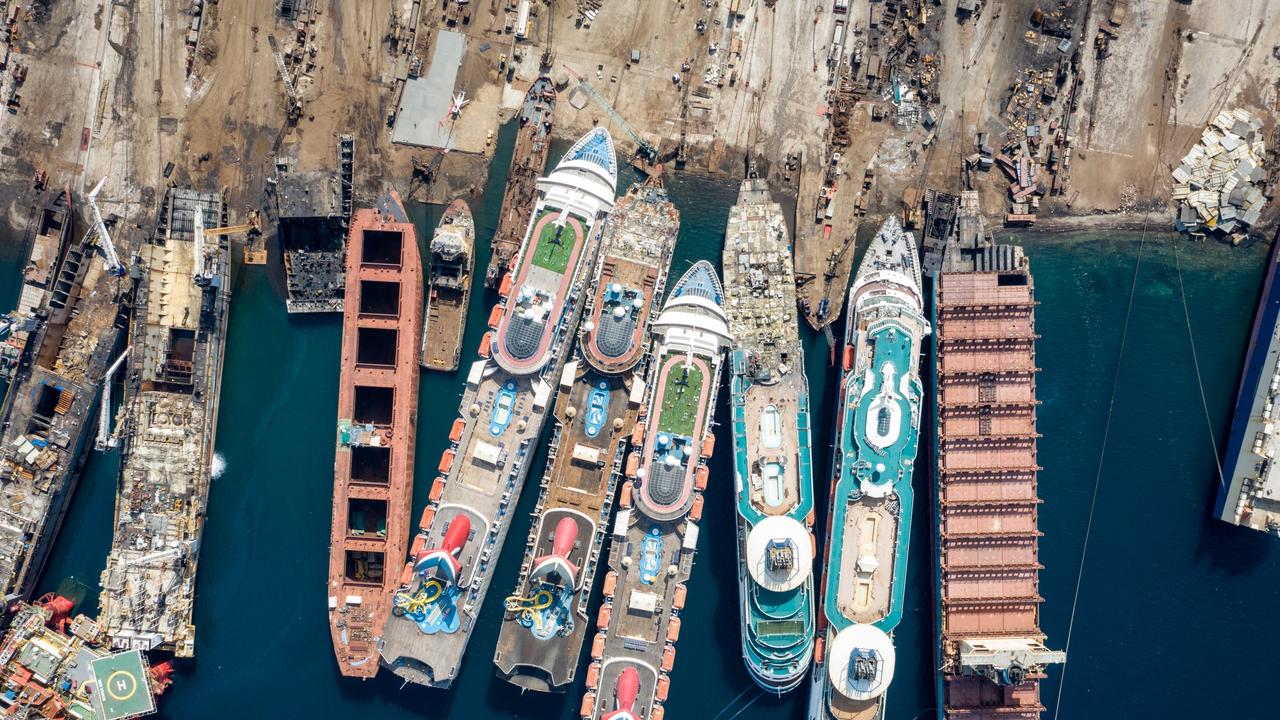
P&O Australia unveiled a new look for Pacific Explorer in 2020, after a multimillion-dollar upgrade in Singapore’s Sembawang Shipyard.
The Pacific Explorer, previously known as the Dawn Princess, was originally built in 1997 for a reported $300 million and grew to become one of Australia’s favourite ships.
On Tuesday, Carnival Cruises announced the family-friendly P&O Australia cruise brand will wind up operations after almost a century of voyages. By March 2025 the brand will be folded into the Carnival umbrella.
How are the ships pulled apart?
Despite the value of these mammoth ships like the Explorer, many operators see it more valuable for them to be sold for scrap rather than stay in commission.
Give the joy these ships bring to their passengers, it’s often a sad ending to see their final journey to the yard where they sail bow first into the land, leaving the stern still afloat.
Typically, a huge team of around 2500 ship breakers begins taking the huge vessel apart.
The process usually begins at the bow, with workers making their way through the ship until they reach the stern.

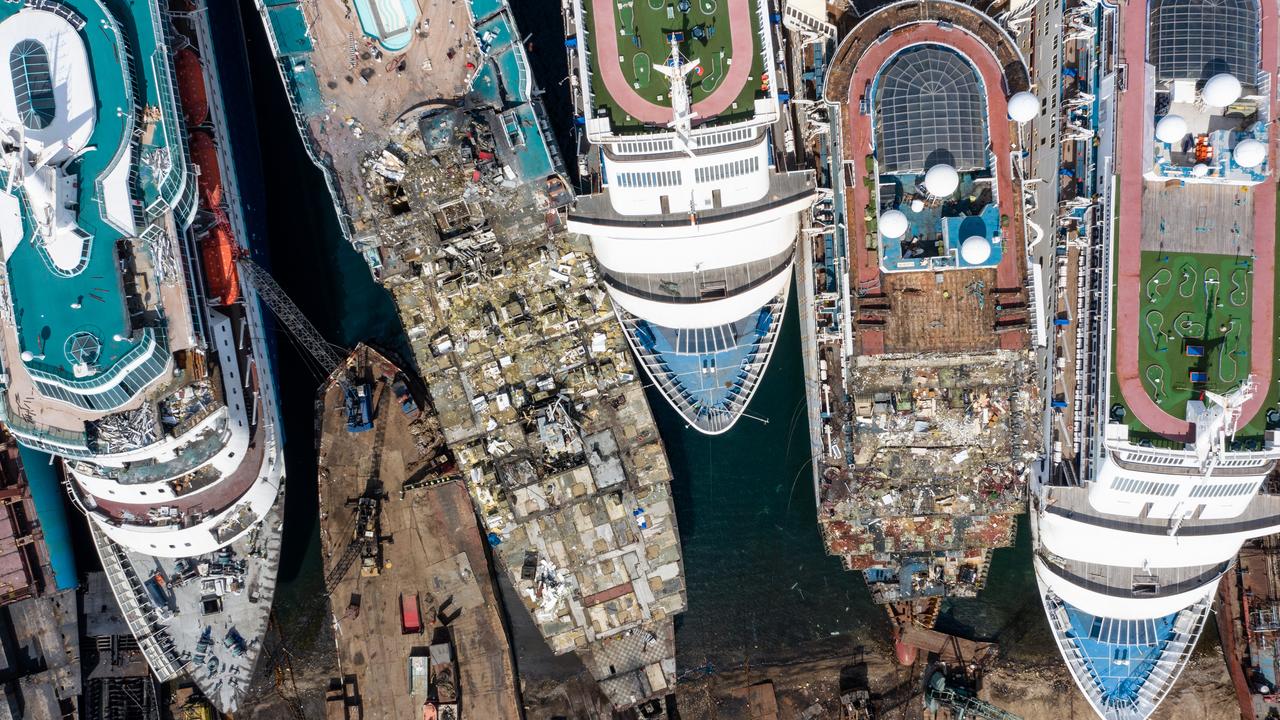
At first the expensive navigation equipment is removed, along with all the furniture including beds, floors and even pianos.
Emre Aras, a manager at the Aliaga yard, said that cruise ships present a unique challenge compared to the other ships it dismantles.
“I can safely say that cruise vessels are the hardest vessel type to dismantle because there are hundreds of rooms on board,” he said.
Then comes taking out all floors, walls, handrails and windows with lots of saws and blowtorches needed to complete the work.
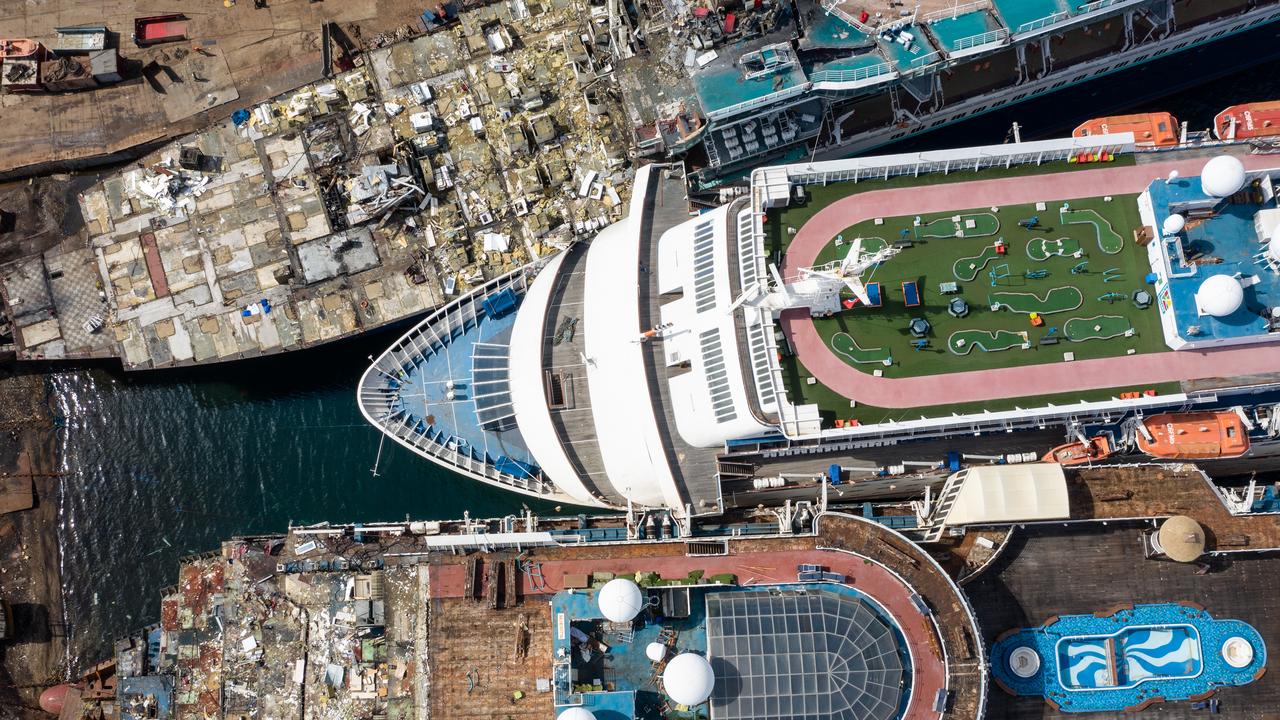
Massive sections of the hull are moved over head with massive cranes capable of lifting objects of 2000 tons in one go.
From start to finish it takes about a year to dismantle a cruise ship, about double the time taken to demolish a cargo ship.
All the parts are moved into separate piles and with the fittings sold on to places like restaurants and hotels, while the steel is melted down and used in industry.
As well as Aliaga, other cruise ship graveyard include Alang, India and Chittagong in Bangladesh.
– with The Sun


